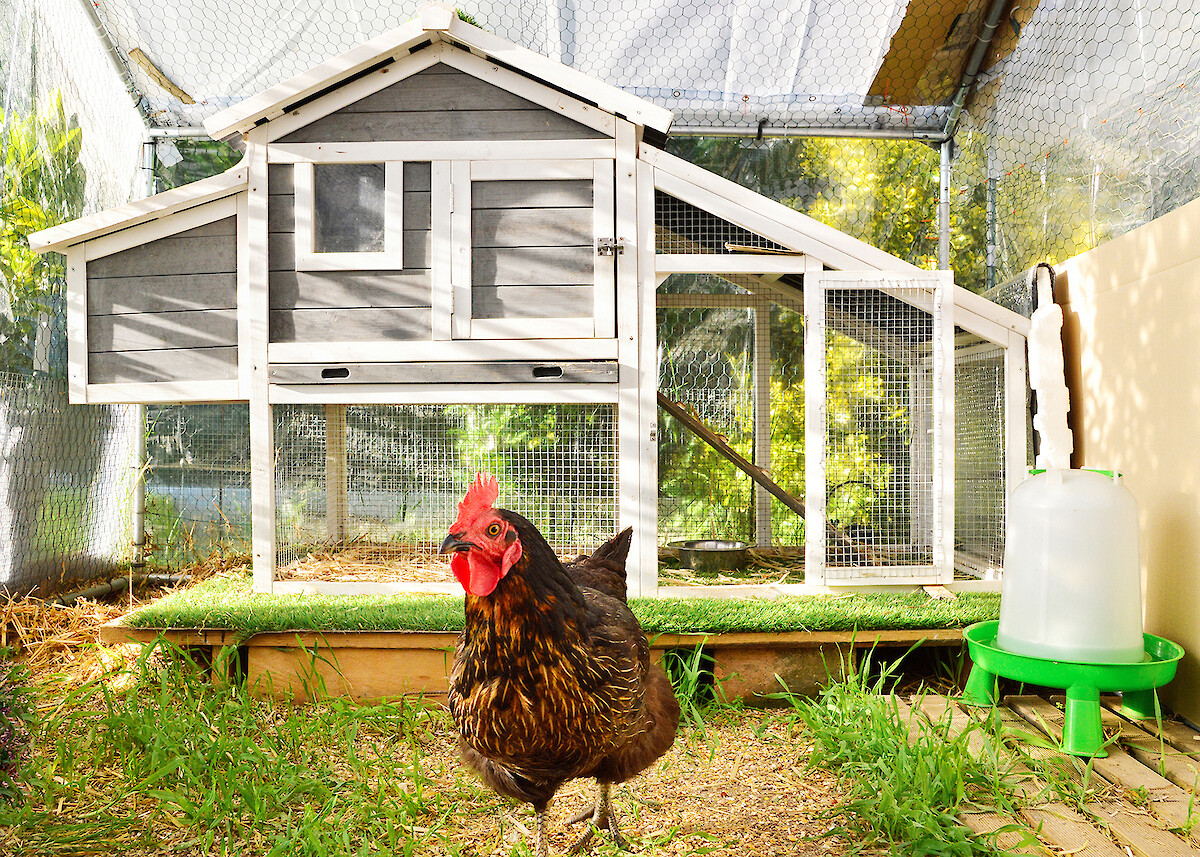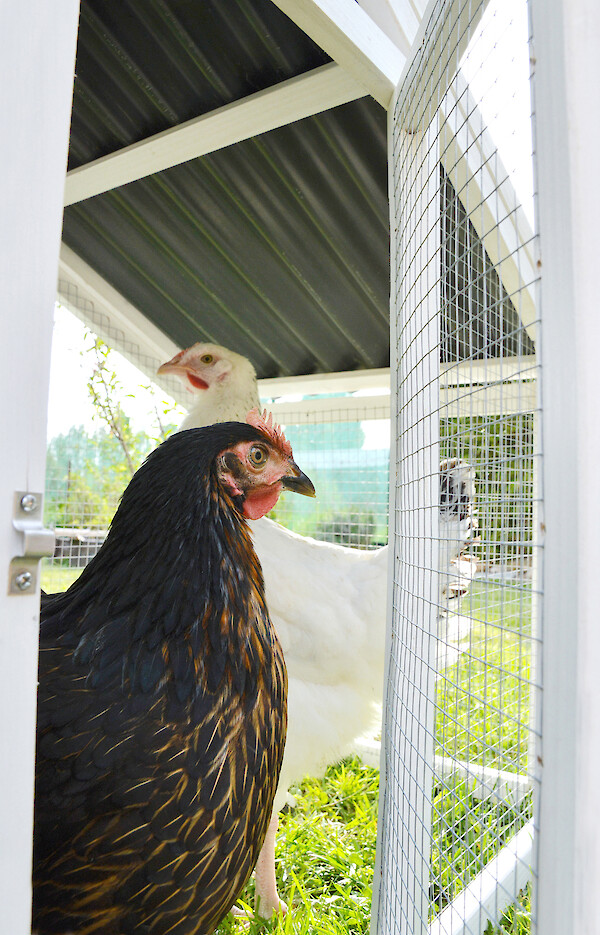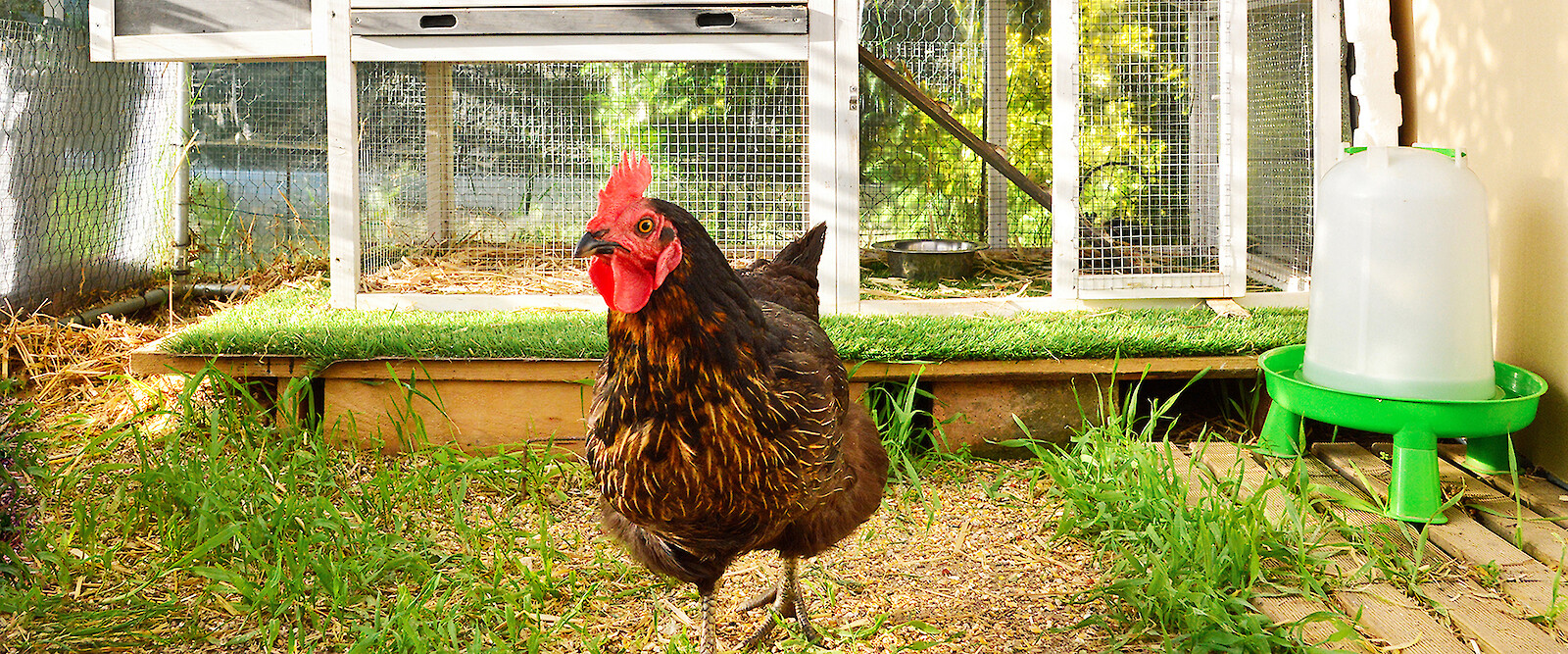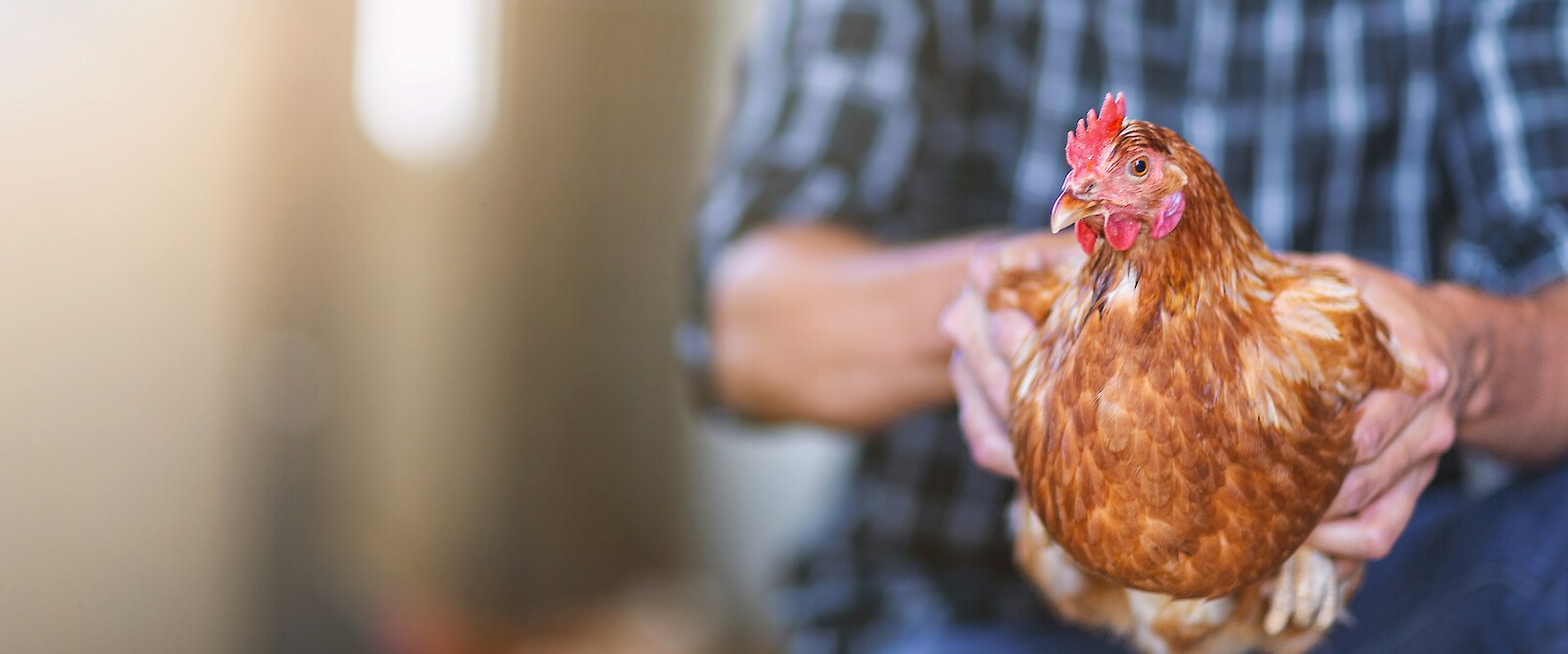Answers to burning questions
Avian influenza 2021: How private poultry farmers can act correctly
After the first dead wild birds were found in North Friesland, the first geese became infected on a farm in Schleswig-Holstein. The first outbreak of avian influenza in Germany in autumn 2021 has unsettled many poultry farmers. In order to protect their own flocks, they need to act quickly and keep a cool head. In the following article you will find some initial information on how you should act now and where you can find advice. You can always find out which regulations apply in your area by contacting your competent authority*.
Avian flu (synonym: avian influenza) is a particularly contagious poultry disease. Due to the high risk of infection and the high mortality, strict rules apply to its control according to the Avian Influenza Ordinance (GeflPestSchV).
Where is bird flu currently rampant?
Poultry farmers can find an overview of the current infection situation in Germany on the website of the Friedrich-Loeffler-Institut (FLI). Founded in 1910, the FLI regularly publishes articles on bird flu and avian influenza in its function as the Federal Research Institute for Animal Health. Here, interested parties can find further information and a map of Germany and Europe with all reported cases.
Definition: Are avian flu and avian influenza the same thing?
Avian flu, avian influenza, avian influenza - one disease, many names. All terms refer to a fatal viral disease that primarily affects turkeys, chickens, ducks, geese and wild birds. In specialist circles, the highly contagious infectious disease is abbreviated as HPAIV.
Infection with the avian flu usually leads to the death of infected animals. In very rare cases, transmission to other animal species (e.g. domestic cats) has also been observed. Depending on the type of pathogen, bird flu or avian influenza is more or less contagious. Vaccination of poultry is only possible to a limited extent.
Symptoms: How do you recognise an infection with avian flu / avian influenza?
Avian influenza manifests itself in very different ways. According to the Federal Food Safety and Veterinary Office (FSVO), an infection with the pathogens of avian flu in chickens can lead to a number of symptoms, which, however, also resemble an ordinary flu (influenza) (see below). The situation is different with waterfowl: if geese or ducks are infected with the highly contagious pathogens, often only minor or no signs of illness are observed.
The mortality rate of poultry infected with avian influenza is almost 100%. Also, a large number of sudden deaths without clinical signs usually indicate infection of the flock.
Overview of common symptoms of avian flu or avian influenza (selection)
- Breathing problems (e.g. coughing, sneezing) up to and including respiratory distress
- Plumage appears shaggy
- Swelling in the area of the legs or head (e.g. on the wattles or comb)
- Bluish discolouration on wattles and/or comb
- Abnormal gait and/or conspicuous posture of the head
- Strikingly watery and/or mucopurulent diarrhoea, often green in colour
- Animals are increasingly lethargic/apathetic

Bird flu in my region - my flock is not affected. What to do?
Bird flu or avian influenza is rampant in your district, but your flock is not affected? This buys poultry farmers time, but does not mean the all-clear has been given. After all, the highly contagious disease can spread within a very short time. Take the opportunity to arm your poultry flock against infection.
- If you have any questions, please contact the competent authority*. Depending on the region, this may be the local environmental or veterinary office. There are sometimes different regulations depending on the district.
- If you keep your poultry within a restricted area (a circular area with a radius of three kilometres around an officially known case of bird flu), you must house your poultry.
- You must secure your enclosure against wild birds. For this purpose, you must, for example, attach a waterproof cover (top and side) to the enclosure.
- In protection zones, it is compulsory to wear protective equipment when entering the barn. Here you have the choice between disposable protective clothing and special stable clothing.
- Stable clothing: Choose a pair of trousers with a work coat and rubber boots. These will remain in the pen after the run and must be washed or disinfected regularly. Commercially available disinfectants from the drugstore are suitable for this purpose.
- Disposableprotective clothing: Special disposable overalls and overboots are available from your country store( find your nearest country storehere ) or online. You must dispose of these harmlessly after use.
- In addition, the following hygiene measures apply. These are aimed at preventing the spread of pathogens in the barn:
- Wash your hands before and after entering the barn.
- Place a disinfectant tub for your shoes outside the stable (if you do not own stable shoes).
- Keep other pets such as dogs away.
- Store feed, bedding (e.g. deuka spelt litter) and all other objects for mucking out and feeding in a way that is safe for wild birds.
- Only use tap water for watering.
In this context, you should also check whether it is possible and sensible to register at short notice with the animal disease insurance fund, which will pay a proportion of the replacement costs if the flock is culled.
Spending a long time in the barn is unfamiliar to many herds. Therefore, provide sufficient distraction and employment opportunities during stabling to prevent feather pecking. The following measures can help:
- Hang up alfalfa or hay nets
- Set up sand baths
- Offer the birds heads of lettuce hanging on strings
- Lay out pecking stones

Bird flu in my region - my poultry is affected. What to do?
As soon as poultry farmers suspect an infection in their flocks (see section "Symptoms"), they must act quickly! An infection with avian influenza must be reported! Immediately report dead animals or a symptomatic flock to the competent authorities (e.g. environmental agency, veterinary office or similar - depending on the region)*. The following measures can also help to stop the spread of the disease:
- Lock your poultry in the house. This will prevent the infection from spreading beyond your flock.
- Wear protective clothing (e.g. overalls, rubber boots, gloves, etc.).
- Wash and disinfect the clothing you use and dispose of used disposable clothing after each visit to the barn.
- Minimise contact with infected animals.
Fordetailed measures to contain an outbreak of avian flu or avian influenza, contact the competent authority*. Only their guidelines are authoritative for your further action.
Bird flu is rampant: Can I continue to eat eggs and poultry?
An outbreak of bird flu is unsettling poultry farmers and consumers alike. However, at least consumers can breathe a sigh of relief. After all, long-term heating of eggs and meat completely kills the pathogens that cause bird flu or avian influenza. Well-cooked chicken meat and hard-boiled eggs are suitable for consumption.
Marketers must nevertheless expect a decrease in demand for eggs and chicken meat in affected areas.
Zoonosis: Can I also be infected as a poultry farmer?
Bird flu or avian influenza is first and foremost a disease of poultry. However, depending on the type of pathogen, transmission to humans is also possible. For the disease to spread to humans, however, there must be particularly close contact between animals and humans. The World Health Organisation (WHO) registered only 850 cases of human infection with the pathogen "H5N1" worldwide between 2003 and 2017. In Germany, no case of transmission of avian influenza to humans is known so far (as of February 2021).
If poultry farmers become infected with avian flu or avian influenza, this can result in a particularly severe course of the disease. The symptoms are initially similar to those of a severe flu and appear about 14 days after infection. Consult a doctor if you have any questions or are in doubt.
The Robert Koch Institute (RKI) published useful recommendations on its website for preventing infection with avian flu.
Photo credits: © jpr03 - stock.adobe.com
* You do not know which authority is responsible for you? You can find out, for example, at your local citizens' registration office or animal health office. An internet search and a visit to the websites of the city and district may also provide information.
Contact person

Barbara Wefers
Downloads
Downloads
Contact person







